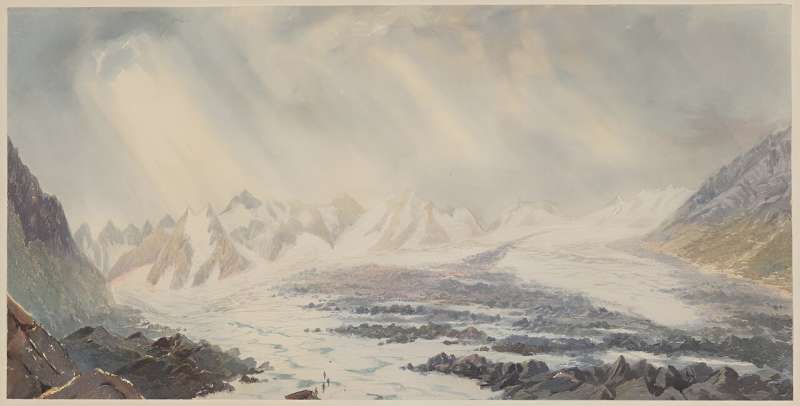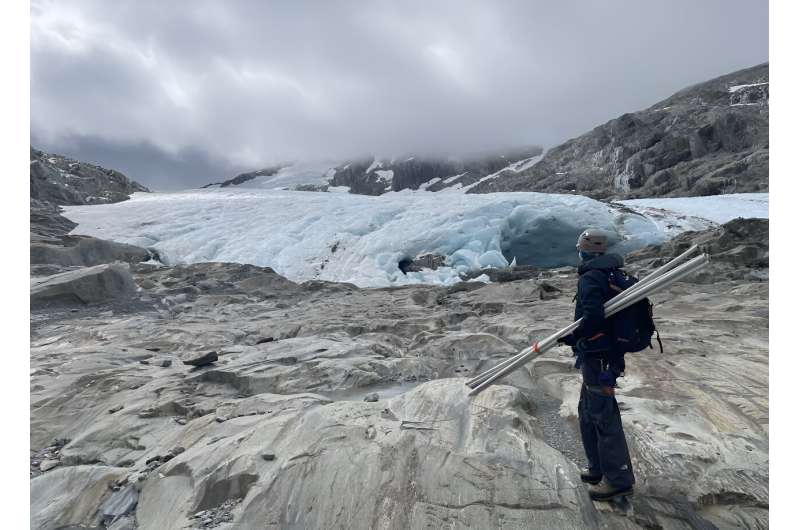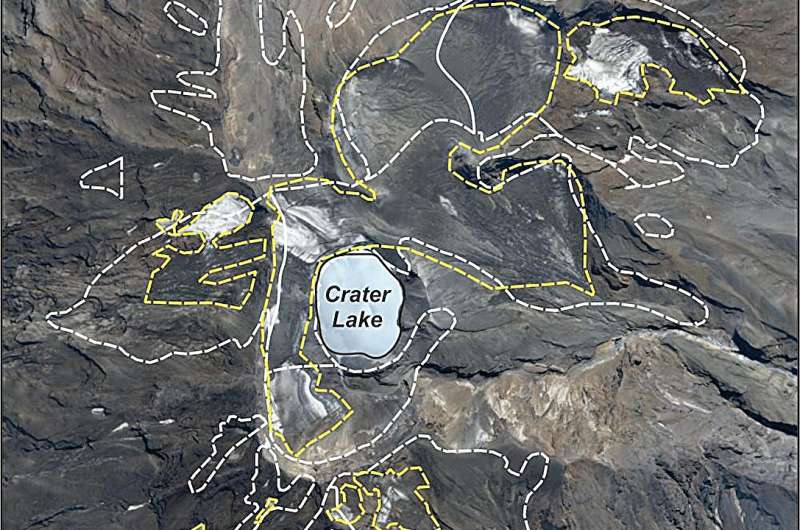
As the austral summer draws to a close, we are preparing to fly over the Southern Alps to survey glaciers. This annual flight supports the longest scientific study of Aotearoa New Zealand's icescapes—and it shows that all of our glaciers have retreated since 1978.
This year's survey comes on the heels of the warmest year on record globally and the second warmest for New Zealand, which produced extreme weather events and impacts that still cut deep for many local communities.
Despite strong El Niño conditions in the Pacific this season, which typically boost ice volume, we expect the recent heat grilling the glaciers will have had a grim effect.
Det 46-åriga rekordet av glaciärbilder i slutet av sommaren är otroligt värdefullt eftersom det innehåller ovedersägliga visuella bevis på klimatförändringar. Vi kan se hur glaciärer förändras från år till år, med extremt varma år som 2023 som tydligt framträder.
Men våra insikter är inte begränsade till bilder av glaciärer tagna från lätta flygplan. Vi kan också lära oss av historiska målningar av Nya Zeelands bergslandskap.
Gamla målningar med glaciärer är vanliga för de europeiska alperna, där många konstnärer bodde och besökte. Men liknande erbjudanden är relativt sällsynta för vår del av världen.
Vad som är anmärkningsvärt för Nya Zeeland är att några av dessa konstverk producerades utan att konstnären någonsin såg glaciärerna.
We recently scrutinized the artistic vistas painted by John Gully to see if they were true to the real landscapes. Gully based his works on field sketches by Julius Haast, one of the first scientists to formerly recognize widespread glaciation in New Zealand.
Gully's paintings show features that can be linked to glacial landforms we can see today, including moraines (rocks deposited by a glacier, typically at its edges), outwash fans (sediment deposited by braided rivers fed by a melting glacier) and trimlines (lines that mark a glacier's earlier, higher position in a valley).
Many of those features in the paintings have ice in direct contact with them, showing how accurately field scientists and artists depicted glaciers at the time.
Gully's paintings were intended to convey the dramatic scale of a mysterious land located far away from industrialized 19th-century society. Serendipitously, for contemporary scientists, comparing these artworks with current photos vividly shows the magnitude of ice loss that has occurred since the mid-1800s.
The perspective we get from Gully's paintings concurs with studies that place the timing of ice retreat as being already underway in the mid-1800s. Prior to this time, known commonly as the Little Ice Age, New Zealand experienced cooler temperatures between about 1450 and 1850.
Modeling ice volume loss using these Little Ice Age landforms provides a benchmark. It illustrates that recent changes have occurred in a geological instant and that the peak summer flows from glaciers that helped create the braided river systems so typical of the South Island landscape are in the past.

Accelerating pace of glacier retreat
Recent glacier changes are occurring ever more quickly. The long-term photographic record from the Southern Alps shows an acceleration of the pace at which snowlines rise due to climate warming.
For a glacier to exist, average summer temperatures must be cool enough for the summer snowline to remain below mountain tops so ice can accumulate. We now observe that ice is disappearing from mountains which held small amounts during the late 1970s. Glaciers there are going extinct.
Combining long-term snowline observations with direct field measurements of glacier mass balance and 3D models of ice volume change gives a good synopsis of how things have changed and a sense of things to come.
We estimate at least 13 trillion liters of water (in the form of ice) has been lost from the Southern Alps since 1978. This is equivalent to the basic water needs for all New Zealanders during that time.
The regions around the central Southern Alps that hold many small glaciers are experiencing accelerated ice loss. Some areas, like Southland and Otago, have small glaciers that are rapidly approaching an extinction horizon. And once they pass it, we are not likely to see them again.

The central North Island also hosts a number of small glaciers on Mt. Ruapehu that feed into the headwaters of the Waikato and Whanganui rivers. Glaciärer där kartlades ursprungligen i mitten av 1900-talet och igen 1978, 1988 och 2016. En ny fotografisk tagning av Mt Ruapehu återspeglar en fruktansvärd situation, vilket tyder på att glaciärer snabbt närmar sig utrotning.
New Zealand's diminishing glaciers and loss of ice across Earth are largely carrying on unabated. These changes are primarily caused by rising temperatures driven by human activities that produce greenhouse gas emissions.
The global increase in atmospheric carbon dioxide continues undiminished. This needs to change soon and rapidly to protect many of our glaciers.
We face particularly serious ethical questions with respect to Mt Ruapehu's glaciers. They help sustain the Whanganui River Te Awa Tupua, which has been granted the rights of a living entity. Glaciärernas pågående reträtt – och möjliga utrotning – framhäver vårt kollektiva ansvar för att samtidigt skada miljö och människor.
Tillhandahålls av The Conversation
Den här artikeln är återpublicerad från The Conversation under en Creative Commons-licens. Läs originalartikeln. 